
What Is A Cannabis Strain?
Purple Haze, Blue Dream, White Widow—there's no shortage of exotic cannabis strains out there. But what exactly constitutes a strain? Keep reading to learn everything there is to know about weed strains.
A cannabis "strain" refers to a unique variety of cannabis. Strains are most commonly created by growers and breeders by crossing two or more varieties of cannabis to create offspring with specific traits (aromas, effects, or grow characteristics). However, cannabis strains also exist in nature, and are called landrace strains. Strains usually get their names from the breeders/growers who create them, and their names typically make reference to their unique traits, such as the colour of their flowers, their aromas, or more.
Note: the technical name for a strain is "cultivar". The definition of a cultivar, according to the Cambridge English dictionary, is:
"a variety (= type) of a plant that has been produced by breeding"
Indica, sativa, ruderalis: the building blocks of cannabis genetics
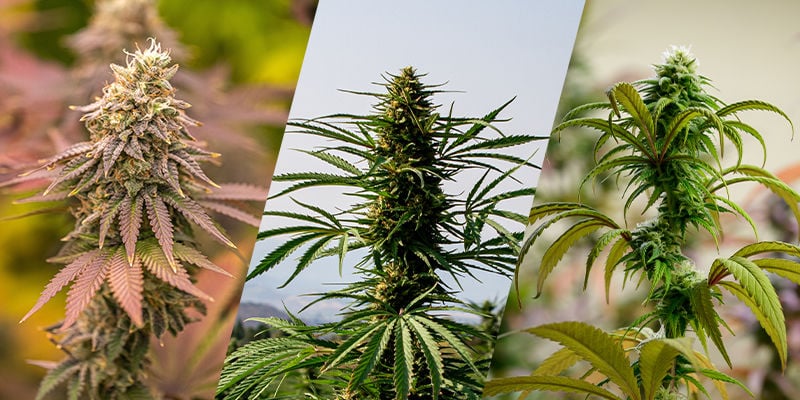
Strains sold at dispensaries or coffeeshops and through seedbanks contain some degree of either sativa, indica, and/or ruderalis genetics. While there's still some degree of debate surrounding the technical taxonomy of cannabis, many people agree that the cannabis genus is divided into 3 unique species/subspecies: cannabis sativa, indica, and ruderalis.
C. Sativa
Cannabis sativa was first classified in 1753 by Carl Linnaeus. Linnaeous' description was based on the hemp plants widely cultivated across Europe at the time. It's worth noting that in scientific terms, Cannabis sativa is sometimes the name given to all cannabis plants—all cannabis plants can be considered to belong to this species.
C. indica
Cannabis indica was named in 1785 by Jean-Baptiste Lamarck, and was based on cannabis specimens originating from India. Because of the stark differences between these plants and those described by Linnaeus, Lamarck proposed cannabis indica be considered a different species to cannabis sativa.
C. ruderalis
Cannabis ruderalis was first described in 1924 by D. E. Janischewsky and describes a unique variety of feral cannabis native to Russia and Central/Eastern Europe. Cannabis ruderalis is the smallest of all cannabis varieties and flowers automatically with age, rather than based on changes to its light cycle.
What do breeders look for when creating cannabis strains?
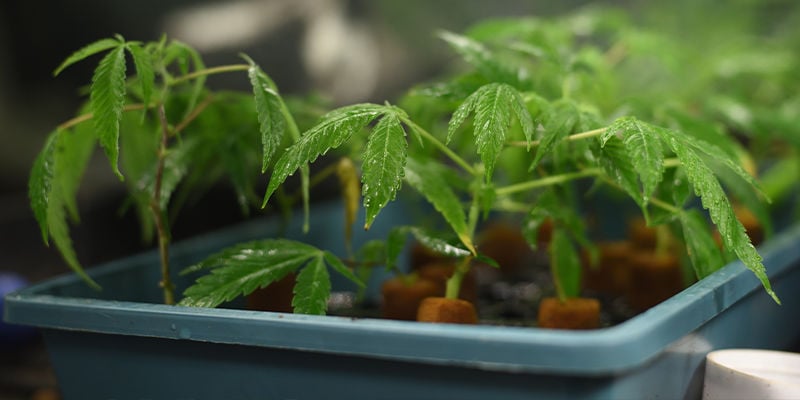
Cannabis strains can be found in nature or carefully bred by breeders. Either way, cannabis breeders choose strains based on specific traits or characteristics. Some traits almost every breeder looks for in a strain are ease of growing and flowering time (the faster the better), but there are many others. A strain's genetic background (be it indica, sativa, ruderalis, or any combination of the three) has a big impact on its traits.
Some traits breeders pay special attention to when selecting strains include:
Appearance: size and color
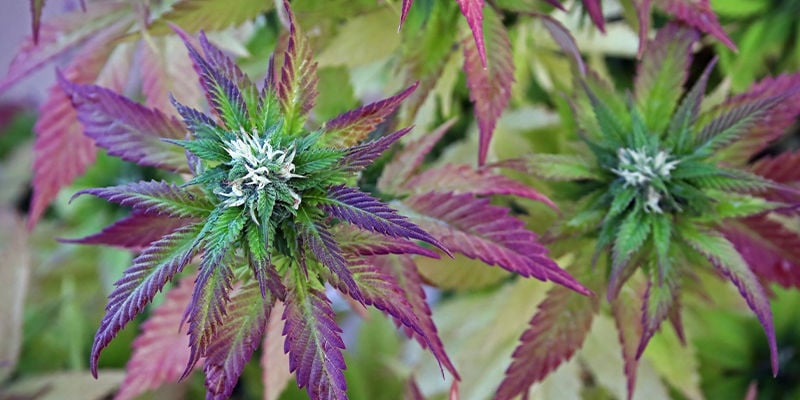
A plant's size has a big impact on how it grows and its yield potential. While larger plants typically produce heavier harvests, they are also much harder to control in small spaces, such as indoor rooms and tents. A plant's colour, on the other hand, is a more aesthetic consideration that affects the "bag appeal" of the flowers it produces.
Autoflowering
Cannabis indica and sativa are photoperiod plants, meaning they flower based on changes in their light cycle. Cannabis ruderalis, on the other hand, flowers naturally once it reaches a certain age. While ruderalis is naturally small and contains little THC, breeders can mix small amounts of ruderalis genetics in with their sativas or indicas to create plants that contain the potency and yield potential of cannabis sativa or indica with the autoflowering traits of Cannabis ruderalis.
Cannabinoid balance: CBD, THC, and more
Cannabinoids are active compounds in cannabis that greatly influence the plant's unique effects. THC, for example, is renowned for its potent high, while CBD is more mellow and non-intoxicating. Breeders often create strains with unique cannabinoid concentrations to suit the preferences/needs of different users.
Bud structure

Cannabis indica is known to produce denser flowers that weigh more and also look more attractive to cannabis users. Cannabis sativa, on the other hand, produces larger but more airy flowers. Most growers and cannabis users prefer flowers with a tighter indica bud structure, so breeders tend to keep their eyes peeled for those kinds of strains.
Terpenes: flavor and aroma
The flavour and aromas of cannabis are very important to users. While terpenes are the main compounds responsible for the way a strain smells or tastes, new research shows that terpenes also impact a cannabis strain's effects, making it evermore important for breeders to take a plant's terpene content into consideration when picking/creating strains.
Yields
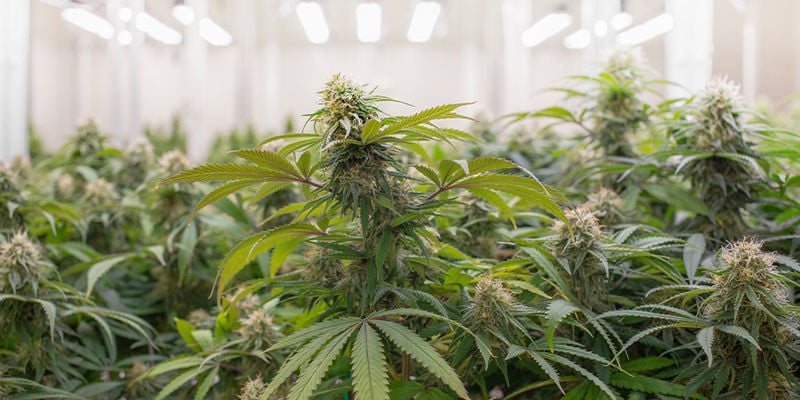
Yields are obviously very important for cannabis growers, especially in commercial settings where a grower's livelihood depends on the quality of their harvest. Cannabis yields depend on a number of factors, including a plant's size and bud structure (which largely depends on genetics) as well as the skill of the grower. Hence, cannabis growers typically look for strains with genetic traits that guarantee good yields in optimal conditions.
Hardiness: pest and mould resistance
Cannabis, like all plants, can be subject to pests and other pathogens. Mould, in particular, can completely kill plants or ruin an entire harvest. Hence, breeders often look for strains with high resistance to pests and moulds, as well as stress from poor growing conditions or training.
Potency
Some cannabis users look for high-potency strains, while others prefer a more mellow experience. A strain's potency really depends on its genetics, which tend to dictate its terpene and cannabinoid production, as well as its ability to produce resin. More resinous strains produce more cannabinoids and terpenes, so breeders typically prefer strains with the best resin production to guarantee higher potency.
Specific effects

Cannabis acts on the endocannabinoid system, which is a sort of regulatory system that controls many bodily functions, from mood to digestion and even sleep. Hence, it's no wonder that cannabis can affect us in many different ways, and that cannabis users tend to seek out strains that make them feel a certain way—be it uplifted, energetic and creative or introspective and relaxed.
While we still don't completely understand cannabis and its many active compounds, a strain's cannabinoid and terpene concentration (which are likely governed by a mix of genetics and environmental factors) has the biggest influence on its effects. Breeders often select strains for specific effects, be it a physical body buzz or more energetic cerebral effects.
Short flowering period
Cannabis strains mature at different times. Sativas are particularly known for taking a long time to flower, while indicas tend to mature more quickly. This may have to do with the origins of these strains. Sativas are believed to originate from warmer, more tropical regions with long summers, while indicas are believed to originate from colder regions with naturally shorter summers.
A strain's flowering time is an important factor for growers. Strains that take longer to flower can become susceptible to pests and pathogens, especially in areas with late summer rains. Indoors, strains with longer flower times are also more complicated to manage. In general, growers tend to opt for strains with the shortest flowering times.
How are cannabis strains created?
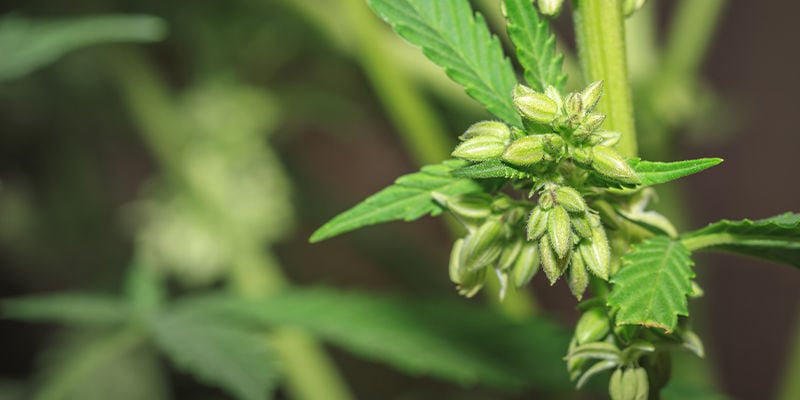
Cannabis strains can be bred under controlled conditions. Most strains on the market today are the result of specialised breeding. However, cannabis strains are also created through natural selection as native cannabis species self-pollinate and adapt to their local environment over time.
Natural selection
Cannabis grows naturally in many parts of the planet. And, like all living organisms, cannabis plants have learned to adapt to their environments over time. As they do, they take on unique traits, particularly specific statures or flowering times. This process of adaptation may also indirectly affect a plant's chemical makeup, aromas, flavours, and effects. Landrace strains, for example, are the perfect example of unique cannabis varieties that are the result of the plant's natural adaptation to its environment.
Breeding
Most modern cannabis strains are the result of specialised breeding programs run by seed banks and collectives. Here, breeders meticulously select strains to hybridise (i.e. crossbreed) based on their traits. Once they find a strain they like, breeders use techniques to stabilise that strain's genes and ensure its traits are preserved across multiple generations.
In 2023, leading Spanish seed bank Royal Queen Seeds launched the world's first line of F1 cannabis seeds. Without getting too technical, F1 hybrids are essentially plant varieties that stem from a long line of inbred plants, and as a result, produce vigorous and stable plants. Until now, cannabis growers have often had to deal with different cannabis "phenotypes" that, despite stemming from the same parent strains and seed batch, produce notably different plants. F1 cannabis hybrids are extremely stable and produce much higher yields compared to regular strains (very much similar to F1 corn or tomato crops).
Genetic engineering
Genetic engineering involves manipulating a plant's or animal's genome (genetic code). Dating back to the 1970s, genetic engineering has brought us everything from glow-in-the-dark animals to fast-growing salmon and Flavr Savr tomatoes (Moss, 2022).
Since it's already been done to plants, genetically modifying cannabis makes sense. In fact, it's already being tested. In 2022, a biotech company from Indiana, USA, announced it found a way to genetically modify the THC production of cannabis (Herrington, 2022). In 2021, other companies also explored ways to use "genetic editing" to create strains with desired attributes like disease resistance, terpene changes, and more (Long, 2021). In the future, as laws regarding cannabis continue to change and the legal cannabis industry grows, we may likely see genetic engineering play more of a role in the creation of cannabis strains.
How to choose a cannabis strain
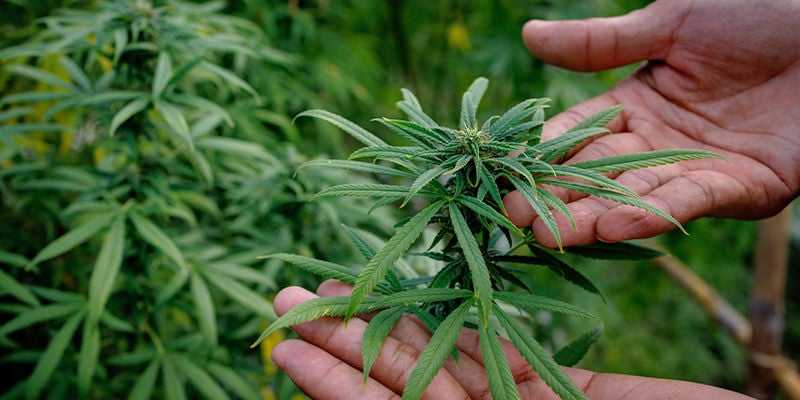
In the same way, breeders can select strains for particular traits, we similarly encourage growers to shop around for strains that suit their garden, grow style, and preferences. For example, if you grow indoors in a small tent, you may want to look for compact strains with a short flowering time and little stretch. If, on the other hand, you grow outdoors and want to maximize your yields every summer, you may want to grow larger plants to guarantee heavier harvests. Finally, you should also consider the effects and aromas you like in your cannabis, and shop accordingly.
Use our cannabis seedfinder!
With so many cannabis strains on the market, finding the perfect strain can be tricky. That's why we've created the Zamnesia Seed Finder! Check it out here and use it to find the perfect strain based on your growing style and user preference.
5 strains with noteworthy traits
Finding the right strain to suit your garden, growing skills, and smoking preferences can take some time. While every grower/smoker is different, here are a few noteworthy cannabis strains with beloved traits that you might want to check out.
Blue Dream: high mould resistance
Mould can destroy a harvest. If you live in a humid area and have run into issues with mould in the past, try Blue Dream on your next grow. Besides her mould resistance, Blue Dream has delicious aromas and a well-balanced effect that relaxes the body while calming the mind.
Dance World: 1:1 THC–CBD ratio
If you prefer a more mellow effect from cannabis than the intense high of THC-dominant strains, definitely check out Dance World. With a 1:1 THC–CBD ratio, Dance World produces a well-balanced effect that's energising and positive, yet not overwhelming.
Frisian Duck: ideal for stealthy growers
Want to keep your grow hidden from prying eyes? Frisian Duck is a great option. Having inherited the uniquely shaped leaves of her predecessor, Ducksfoot, Frisian Duck can hide in plain sight. She is ideal for outdoor growers looking to keep their grow from catching any unnecessary attention.
CBD Fix: pure CBD
Looking for a strain you can enjoy without getting high? CBD Fix is ideal. Containing only trace amounts of THC, CBD Fix is ideal for smokers and patients who need a strain they can use while still facing everyday responsibilities. Thanks to her unique cannabinoid content, CBD Fix produces a calming, non-intoxicating effect.
Purple Lemonade: beautiful purple buds
Purple buds send both smokers and growers over the moon. If you want to experience the awe of watching a vibrant green plant take on beautiful purple hues as she approaches harvest, Purple Lemonade is the strain for you!
Cannabis strains: a world of genetic wonders
Cannabis is an ancient plant with a vibrant gene pool. Cannabis strains are the result of both natural selection and human breeding, and allow growers and smokers to explore this beautiful plant and its many fascinating traits.
- 12 bizarre examples of genetic engineering. (Long, A). Genetic editing offers marijuana and hemp companies a way to improve plant strains - https://mjbizdaily.com
- Herrington, & A. J. (2022). New Gene Technology Allows Growers To Boost THC Levels In Cannabis - https://www.forbes.com
- Moss, & L. (2022). 12 Bizarre Examples of Genetic Engineering - https://www.treehugger.com
-
 4 min
31 January 2021
What Is Cannabis?
Sometimes we get so wrapped up in what strain to buy that we forget about the fundamentals of cannabis. Fortunately, we've put together the ultimate beginner's guide. So, whether you're a novice or...
4 min
31 January 2021
What Is Cannabis?
Sometimes we get so wrapped up in what strain to buy that we forget about the fundamentals of cannabis. Fortunately, we've put together the ultimate beginner's guide. So, whether you're a novice or...
-
 6 min
10 March 2020
Best Outdoor Cannabis Strains To Grow In France
Do you want to grow cannabis outdoors in France? Since the French climate can vary greatly depending on location, your choice of strain is crucial to the success of your grow. Find out the best...
6 min
10 March 2020
Best Outdoor Cannabis Strains To Grow In France
Do you want to grow cannabis outdoors in France? Since the French climate can vary greatly depending on location, your choice of strain is crucial to the success of your grow. Find out the best...
-
 5 min
6 September 2019
Top 10 Best Cannabis Strains
Ever wondered what our favourite cannabis strains are here at Zamnesia? Wonder no longer, we have put together a list of our top 10.
5 min
6 September 2019
Top 10 Best Cannabis Strains
Ever wondered what our favourite cannabis strains are here at Zamnesia? Wonder no longer, we have put together a list of our top 10.
-
 4 min
23 March 2018
The 10 Best Ways To Smoke Cannabis
Whether you prefer smooth and easy hits or big gulps of smoke, you can find more than one way to toke on your favorite herb.
4 min
23 March 2018
The 10 Best Ways To Smoke Cannabis
Whether you prefer smooth and easy hits or big gulps of smoke, you can find more than one way to toke on your favorite herb.









 United States
United States













